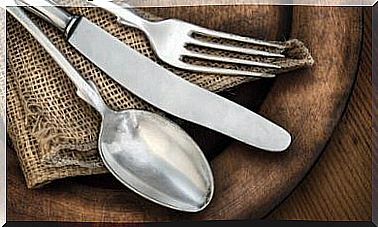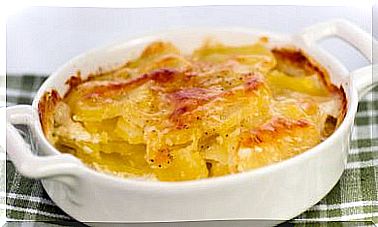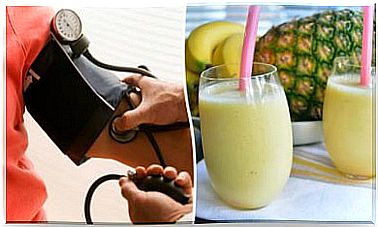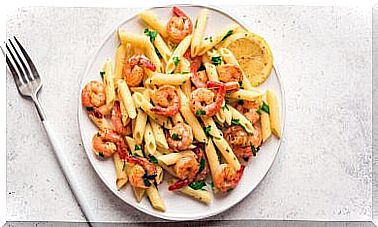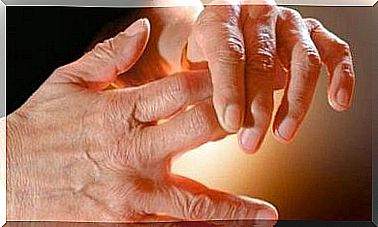Diet For Patients With Anorexia: 4 Keys To Consider
Overcoming anorexia is a process that requires dedication and perseverance; in fact, it is essential to bear in mind that there are foods that the stomach will reject at first.

The perfect physical appearance, wanting to have the body of a model and to look like a television star is a desire that has generated epidemics of eating disorders among the adolescent population and some adults. This time we will talk about the diet for patients with anorexia.
This disorder suffered by some people today, in which young women prevail, is known for the excessive restriction in the consumption of food. If someone you know stops eating for a long time, help them out. The consequences can be deadly. This disorder not only affects the physical health of those who suffer from it, but also their mental health, which is equally or more important. It should be discussed with specialists in the field.
Fortunately, high levels of malnutrition and growth and development problems can be balanced by a good eating plan. Although there are many factors to know about anorexia, the one that refers to diet is very important.
4 keys to consider in diet for patients with anorexia
In very general terms, a person suffering from anorexia should follow a plan with the characteristics that we will describe below. It is worth remembering that an individual with this condition needs the supervision and support of a specialist.
1. A light diet
Anorexia leads the individual to eliminate, almost entirely, food intake. If this is your case or that of a person who is going through this journey, it is important that you start a diet with few amounts of food.
Make sure that fruits, vegetables, vegetables and nuts prevail. In the first stage, avoid dressings or sauces, since they have strong flavors and, in many cases, chemicals that the stomach no longer tolerate.
Try to keep the portions small. It is preferable to eat between five or six light meals to avoid causing digestive discomfort. It is essential to guarantee protein intake to prevent muscle mass. Adequate protein intake has been shown to help preserve lean mass even on a low-calorie diet.
2. Meals must be balanced
A diet for patients with anorexia must ensure that the body receives all the essential nutrients to regain its natural state. In this way, it is important that as much variety of foods as possible be included.
If you are in the presence of a patient with advanced anorexia, start by interspersing foods such as vegetables, fruits, vegetables, and nuts. All this to ensure the greatest contribution of minerals and vitamins.
If, on the other hand, the person tolerates more food, add the protein source, healthy fats and whole grains. It is important to consult a specialist so that they also prescribe some type of multivitamin.
Ensuring adequate levels of vitamin D can be really beneficial. According to research published in the journal Nature Reviews , a lack of this nutrient is related to an increased cardiovascular risk.
3. Attractive dishes to look at
Anorexia is based from the patient’s perspective on a misconception about food. For this reason, it is important to strive to prepare meals that are attractive to those who reject some foods.
Thus, the combination between flavor and presentation is essential. We advise you to prepare small portions, to take care of how they look and that they can be eaten at any time.
4. Seek medical supervision
Fighting anorexia is a difficult challenge to overcome for those who suffer from it and for those close to them. For this reason, it is essential that you seek the help of a nutrition professional, who will guide you in the process of acquiring good and better eating habits.
5 essential foods to combat anorexia
Next, we will review 5 foods that are important to add in a diet for patients with anorexia. Thanks to its properties, this group of foods will provide the individual with the nutrients they need to overcome this disorder.
1. Fish
There are many nutrients that it provides, including phosphorus, selenium, magnesium, iodine and vitamins A and D. The proteins in fish are difficult to digest, so that the patient will feel more satiety, more energy and will not run risks of suffer from diseases such as diabetes or cardiovascular problems.
2. Rice
It is good for maintaining sugar levels and is a great source of fiber if it is whole. Half a cup of rice – approximately 100 grams – provides 115 calories.
3. Nuts
These foods reduce the risk of cardiovascular disease, as stated in a study published in 2013. Patients with anorexia are prone to these conditions, hence the importance of including them in the diet.
4. Legumes

They should be included in the diet for patients with anorexia because they will help prevent constipation, or other conditions related to the colon and intestines.
5. Eggs
They are a rich source of protein, which will help to generate new cells. It will also benefit the functioning of the immune system and revitalize the transport of minerals to the body.
It is important to optimize the diet for patients with anorexia
The diet for patients with anorexia must be strictly adhered to as directed by a nutritionist. This eating disorder can be eradicated with a lot of patience and perseverance, but always in the hands of specialists: remember that your body will need time to regain its capabilities.
Like any delicate process, it requires a lot of discipline and patience for the objectives to be achieved. In that sense, mental toughness is very important, as it will allow you to continue despite obstacles.
